Customer satisfaction is one of the major contributors to the success of any business. It often goes along with many values that businesses can’t resist, such as customer loyalty, repeat purchases, referrals, positive feedback, etc.
Customer satisfaction does not simply show they are happy or unhappy with your product or service. It reveals a lot of eye-opening information that may be necessary for your business strategies. So in this post, we will guide you through how to measure customer satisfaction.
What is customer satisfaction?
Customer satisfaction is the measurement of how satisfied customers are with a specific product, service or experience. It shows whether the interactions customers have with your brand, service, or product are in line with their expectations.
Customer satisfaction is likely to change over time. By measuring customer satisfaction, you have a holistic view of your customer loyalty and the likelihood of customer referrals.

Satisfied customers are highly possible to return. They tend to be loyal to your brand and help expand your business through referrals and positive reviews. Contrarily, dissatisfied customers are unhappy customers who could harm your reputation via negative word-of-mouth.
Why measure customer satisfaction?
Customer satisfaction can make or break a business. It lets you know whether your products or services meet customers’ expectations or not. Some research shows that customer satisfaction can result in greater customer retention, higher lifetime value and a stronger brand reputation.
In particular, when you take a data-centric approach to customer satisfaction, you can:
- Identify dissatisfied customers and figure out why they’re dissatisfied before they switch to your competitors
- Find out customer pain points and learn how to improve your product, service, or overall customer experience
- Drive repeat purchases and boost the customer lifetime value
- Build customer trust by letting them know that their feedback matters
- Discover how likely customers are to recommend your company to a friend, family or others
How to measure customer satisfaction
Measuring customer satisfaction is not as complicated or expensive as many thought. In fact, it’s fairly simple to incorporate customer satisfaction measurement into your current customer success strategy.
When it comes to measuring customer satisfaction, it often comes down to gathering customer feedback via surveys and observing customer behaviors from various touchpoints. To get a complete picture of customer satisfaction, you can try different approaches as shown below.
Customer surveys
Customer surveys are the most popular way to gauge the satisfaction level of your customers. The survey is typically delivered to customers right after they interact with your business.
You should keep surveys to a minimum of questions and offer a mix of rating-scale and open-ended questions. In addition, the survey should be quick, straightforward and painless so that customers can complete it at ease.
There are three key metrics that you should not miss out on to measure the customer satisfaction via surveys including Customer Satisfaction Score (CSAT), Net Promoter Score (NPS) and Customer Effort Score (CES)
Customer Satisfaction Score (CSAT)
Customer Satisfaction Score (CSAT) measures on average, how satisfied or unsatisfied customers are with your products or services. In the CSAT survey, you can ask your customers to rate their satisfaction level with a specific experience on a linear scale. Let’s take an example as follows.
‘How would you rate your experience with our customer service today?’
1 – Very dissatisfied
2 – Dissatisfied
3 – Neutral
4 – Satisfied
5 – Very satisfied
To calculate the Customer Satisfaction Score (CSAT), just take the number of satisfied responses, divide the total number of survey responses and multiply by 100. The result would be the percentage of satisfied customers.

For example, there are 120 survey responses. Of the 100 responses, 60 responders rate either a 4 or 5 (“satisfied” or “very satisfied”). So your CSAT score equals 50% (60 / 120 x 100 = 50%)
Net Promoter Score (NPS)
Net Promoter Score (NPS) measures customer satisfaction by asking them how likely they will recommend a particular product/service to their friend or colleague.
Customers rate the scale ranges from 0-10 where 0 means ‘not at all likely’ and 10 means ‘extremely likely.’
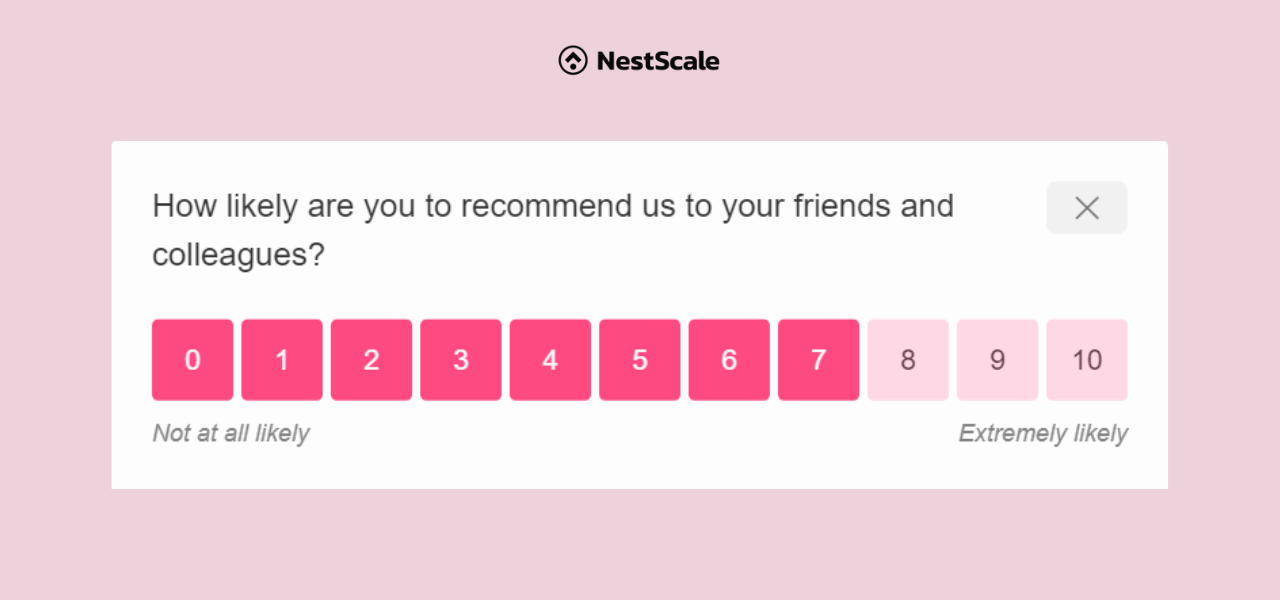
Based on the score rated in NPS survey, you can divide respondents into 3 groups
- Promoters: Responders who rated between 9 and 10. They are happy customers and willing to introduce your business to others.
- Passives: Respondents who rated between 7 and 8. They are satisfied but unenthusiastic customers who are susceptible to competitive offerings.
- Detractors: Responders who rated 0 – 6. They are unhappy customers who can damage your brand and impede growth through negative word-of-mouth.
To calculate NPS score, subtracting the percentage of Detractors from the percentage of Promoters
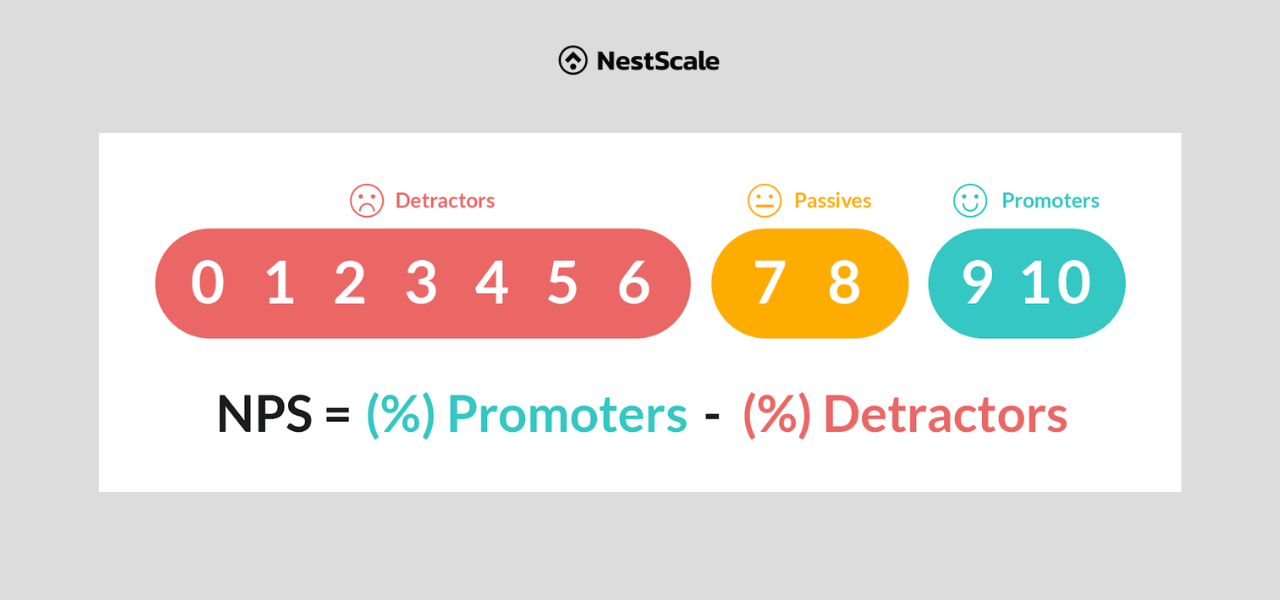
For example, after you send out an NPS survey, the result is that 20 percent of respondents are detractors, 10 percent are passives, and 70 percent are promoters. Your NPS score will be 50.
NPS surveys can be delivered across various touchpoints of the customer journey. Based on the score at each point, you can identify what you should improve for higher customer satisfaction.
Customer Effort Score (CES)
CES is used to gauge the ease of customer experience with your brand. It can be how easy it is for consumers to resolve an issue, get the customer service response, or complete a purchase.
This metric can be used as a high-level indicator of customer satisfaction because the easier the experience is, the more satisfied and loyal customers tend to be. It is helpful not only for understanding customer satisfaction now but also for developing future purchase predictions.
The CES survey commonly asks customers to agree or disagree with the following statement.
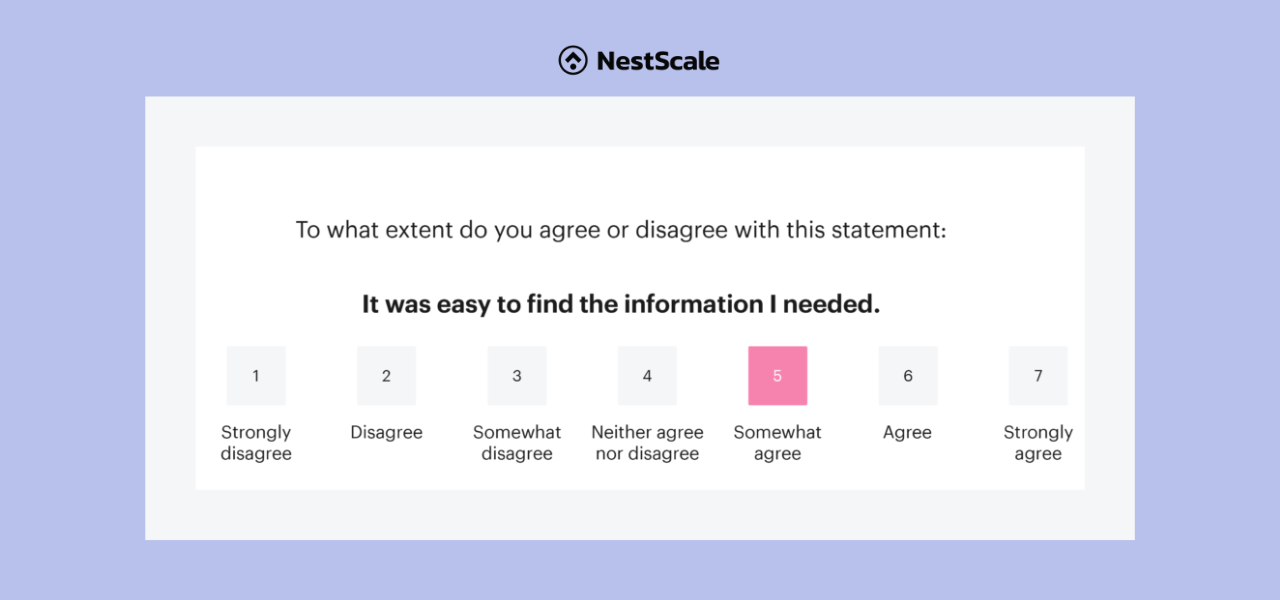
The CES score is calculated by measuring the average of all responses. This means dividing the total sum of responses by the total number of survey respondents.
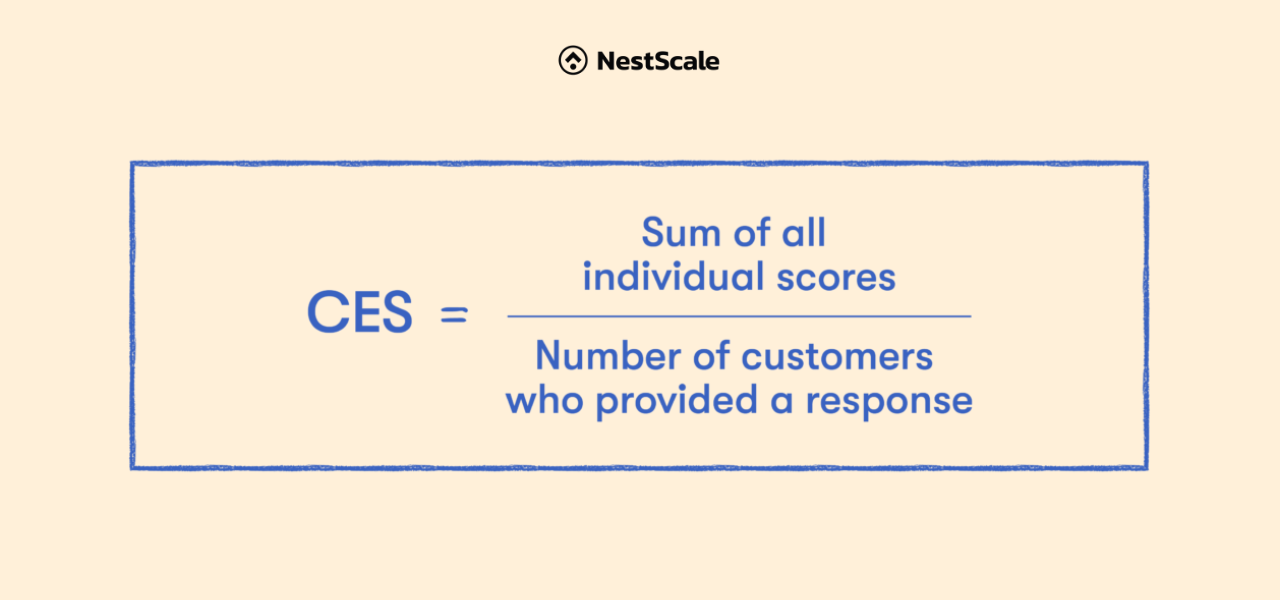
For instance, you receive 50 survey responses and the total sum is 200. Here is how you would calculate your CES score: 200 ÷ 50 = a CES score of 4.
Please keep in mind that both 3 metrics CSAT, NPS and CES should be calculated in tandem with one another to obtain a holistic view of customer satisfaction.
Focus groups and advisory boards
While surveys are important for measuring customer satisfaction, they usually lack context as to why customers gave you a particular number. Focus groups and advisory boards allow you to directly connect with consumers and learn more about their requirements, motivations, and behaviors.

Focus groups are often one-time meetings in which a small group of customers provides input on current or future products or services. An advisory board is identical, except the same group provides feedback on a continuous basis rather than once.
Begin by defining your goals for forming a focus group or advisory board then decide on a day and venue for the meeting. To attract more participants joining in your focus group or advisory board, you can offer an incentive (such as a free or discounted product).
Remember to create an agenda before the meeting to keep conversations on track. If you intend to meet with the same group again, schedule a follow-up meeting before the group disbands. To get the most out of your focus group, try videotaping the meeting so you can subsequently look back to reactions and responses.
With the valuable customer feedback collected from focus groups and advisory boards, you can enhance the internal processes, products, services, and business strategies.
Social media monitoring
Social media has had a significant impact on the relationship between a business and its consumers. Reading social media reviews, posts, and messages enables you to gauge client satisfaction.
Social media has altered the way your users provide feedback. It is now faster, opener, and more honest than ever. Customers can react to or comment on what you’ve posted on your social media networks, such as Facebook, Instagram, LinkedIn, or Twitter. Therefore, you can make the most of these channels to collect customer feedback by conducting online polls, Facebook post autoresponder, direct message, social media contests, etc.
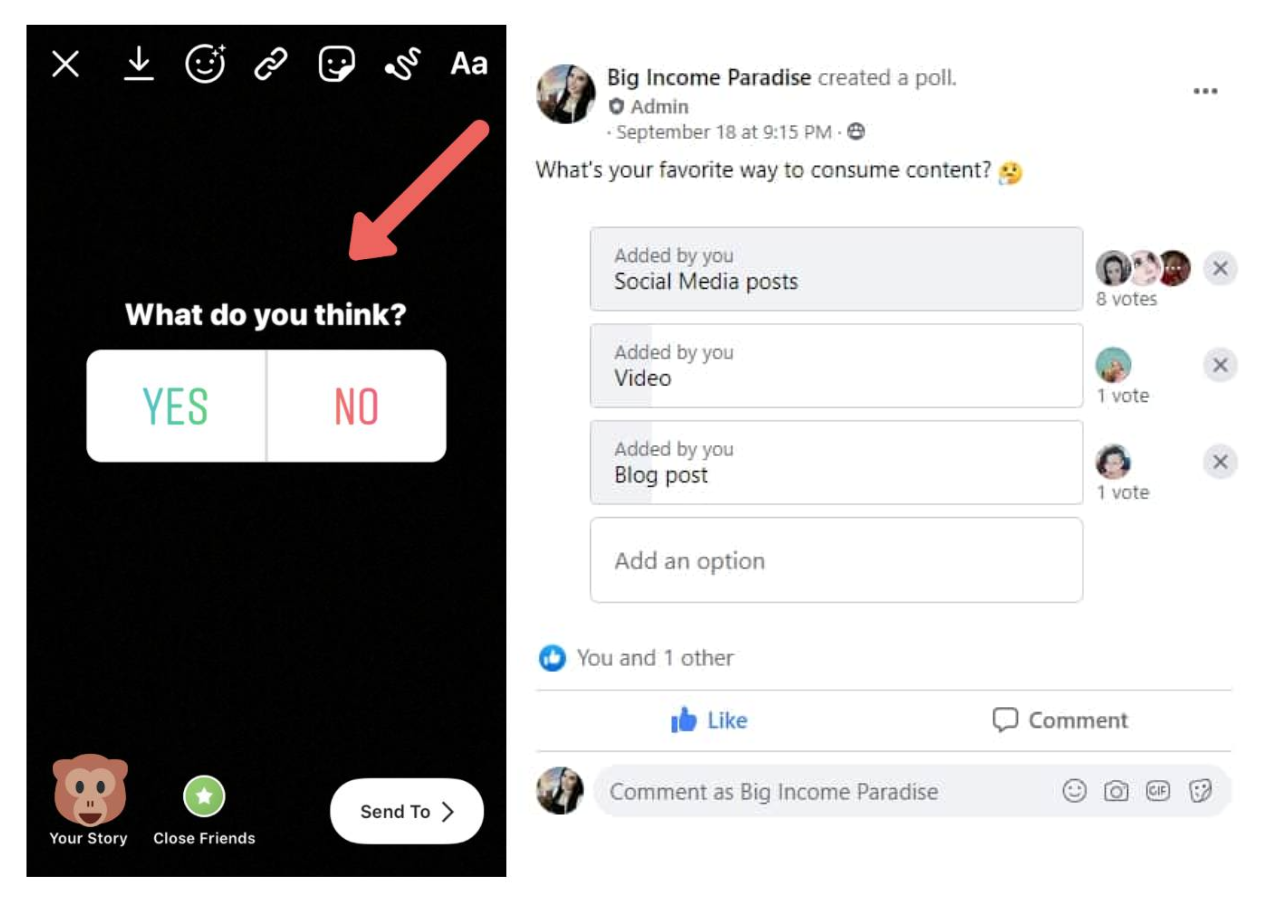
The tools listed below can help you track positive and negative comments, reactions, reviews, and messages on social media.
- Google Alerts: This tool will notify you via emails when your brand appears in new web pages, newspaper articles, blogs, or scientific research.
- Mention: A powerful freemium tool that alerts you whenever your company is referenced on the internet. It’s especially useful for social media monitoring.
- Social mention: A free tool that analyzes social mentions of your brand on the website. It displays the possibility of your brand being mentioned on the web, the ratio of positive to negative mentions, the likelihood of individuals mentioning your brand regularly, and the range of influence.
Customer service response rate
In today’s fast-paced and connected world, consumers expect quick answers, so your response time can have a large impact on customer satisfaction.
Customer dissatisfaction is more likely to increase if your response time is too long. To track whether your customer support team is working effectively you can use 2 these metrics
- First response time (how long it takes a support agent to respond to a customer request)
- Resolution time (how long it takes for an agent to completely resolve an issue)
To calculate the average first response time, you can use this formula.

To measure your average resolution time, use the following formula.

For example, you receive and resolve 3 customer tickets in an 8 -hour workday. One issue takes you three hours, another one takes you one hour, and the last one costs you four hours to solve. Your average time to resolution would be 2.6 hours.
Reducing response and resolution times helps your brand to improve the customer experience and customer satisfaction.
Put customer satisfaction at the center of your business
Customer satisfaction is a crucial factor that can make or break your business. After all, satisfied customers are likely to be loyal to your brand, promote your products or services to others and thereby improve your bottom line. By measuring customer satisfaction, you can obtain valuable customer insights and figure out what should be improved to keep customers happy.
Hope that this post has been helpful to you. If you have any questions or need help in measuring customer satisfaction, don’t hesitate to contact us!





















































